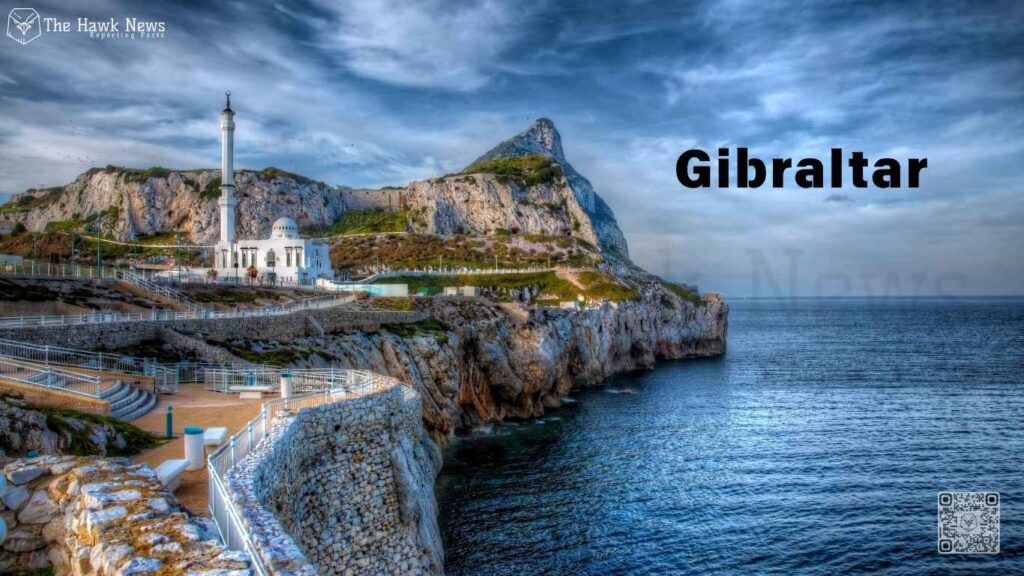
Gibraltar, a small British Overseas Territory located at the southern tip of the Iberian Peninsula, is renowned for its striking limestone cliffs and rich biodiversity. Despite its limited size, this unique ecosystem is home to an array of flora and fauna, some of which are endemic to the region.
Among its most famous inhabitants are the Barbary macaques, the only wild monkeys in Europe. As urban development and tourism pressure the natural environment, efforts to conserve Gibraltar’s biodiversity have become increasingly crucial.
This article explores the diverse ecosystems of Gibraltar, the significance of its wildlife, and the ongoing conservation initiatives aimed at preserving this natural heritage.
A Biodiversity Hotspot
Gibraltar’s unique geographical position at the crossroads of Europe and Africa, coupled with its diverse habitats, contributes to its status as a biodiversity hotspot. The territory encompasses various ecosystems, including coastal areas, grasslands, shrublands, and the iconic Rock itself, which rises 426 meters above sea level.
1. Flora
The plant life of Gibraltar is characterized by a mix of Mediterranean and subtropical species. The region’s limestone geology supports a variety of vegetation types, including scrub, heathland, and coastal habitats. Some notable plant species include:
- Gibraltar’s endemic plant, the Gibraltar candytuft (Iberis gibraltarica), blooms beautifully in spring and is emblematic of the territory’s natural heritage.
- Various Mediterranean herbs and shrubs, such as thyme, rosemary, and lavender, which are not only important for local wildlife but also contribute to the rich flavors of traditional Gibraltarian cuisine.
These plants not only support the local ecosystem but also hold cultural significance for the residents of Gibraltar.
2. Fauna
Gibraltar is home to a diverse array of animal species, many of which are uniquely adapted to its specific environments. The territory’s fauna includes:
- Barbary macaques (Macaca sylvanus): The most famous residents of Gibraltar, these monkeys are known for their intelligence and social behavior. They inhabit the Upper Rock Nature Reserve and have become a symbol of Gibraltar, attracting numerous tourists each year.
- Bird species: Gibraltar serves as an essential stopover for migratory birds traveling between Europe and Africa. Species such as the peregrine falcon, griffon vulture, and various songbirds can be observed in the territory, making it a prime spot for birdwatching.
- Marine life: The waters surrounding Gibraltar are rich in marine biodiversity, including dolphins, sea turtles, and numerous fish species. The nearby marine protected areas serve as critical habitats for these creatures.
Conservation Challenges
Despite its natural richness, Gibraltar’s biodiversity faces significant threats, primarily from urban development and tourism. The rapid expansion of infrastructure, including housing, roads, and recreational facilities, puts pressure on the natural habitats that support diverse wildlife.
1. Habitat Loss
As Gibraltar continues to develop, natural habitats are increasingly fragmented. The construction of new buildings and roads disrupts ecosystems and threatens the flora and fauna that depend on them. For example, the expansion of urban areas can encroach upon the habitats of the Barbary macaques, leading to conflicts between wildlife and human activities.
2. Climate Change
Climate change also poses a significant threat to Gibraltar’s ecosystems. Rising temperatures, changing precipitation patterns, and increased frequency of extreme weather events can affect local biodiversity. Certain species may struggle to adapt to these changes, leading to shifts in population dynamics and ecosystem health.
Conservation Efforts
In response to these challenges, various conservation initiatives are underway to protect Gibraltar’s unique biodiversity. The Gibraltar government, along with local organizations and international partners, is working to preserve the territory’s natural heritage through a combination of policies, education, and active management.
1. Upper Rock Nature Reserve
The Upper Rock Nature Reserve is a critical area for conservation in Gibraltar. Established to protect the territory’s natural beauty and wildlife, the reserve covers approximately 40% of Gibraltar’s land area. It is home to many of the region’s most important species, including the Barbary macaques and various bird species.
Within the reserve, strict regulations limit human activities that could negatively impact wildlife. Conservation efforts focus on habitat restoration, species monitoring, and maintaining the ecological integrity of the area.
2. Education and Awareness
Raising awareness about the importance of biodiversity is essential for successful conservation. Educational programs in schools and community initiatives aim to engage residents and visitors in protecting Gibraltar’s natural heritage. By fostering a sense of stewardship among locals, these programs encourage responsible behavior toward wildlife and habitats.
3. Research and Monitoring
Ongoing research plays a vital role in conservation efforts. Monitoring populations of key species, such as the Barbary macaques, provides valuable data on their behavior, health, and interactions with humans. This information is crucial for developing effective management strategies to ensure the long-term survival of these iconic animals.
The Role of Community Engagement
Community involvement is a cornerstone of successful conservation in Gibraltar. Local residents are encouraged to participate in initiatives aimed at protecting their natural environment. Volunteer programs, such as habitat restoration projects and wildlife monitoring, allow citizens to contribute actively to conservation efforts.
Moreover, collaboration between government agencies, non-profit organizations, and local businesses helps create a unified approach to biodiversity preservation. Partnerships can lead to innovative solutions that balance development needs with environmental protection.
Conclusion
Gibraltar’s unique biodiversity is a precious asset that reflects the territory’s natural heritage and cultural identity. The diverse flora and fauna, including the iconic Barbary macaques, are integral to the region’s ecological and historical narrative.
However, the pressures of urban development and climate change pose significant challenges to the preservation of this rich biodiversity.
Through dedicated conservation efforts, community engagement, and a commitment to sustainable practices, Gibraltar can safeguard its natural heritage for future generations.
As the territory continues to navigate the complexities of modern development, the ongoing protection of its unique ecosystems will be essential in maintaining the delicate balance between progress and preservation.